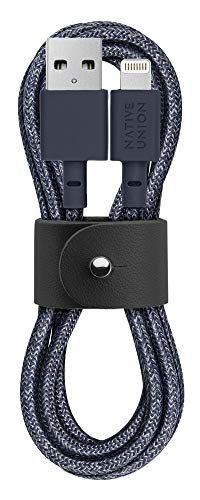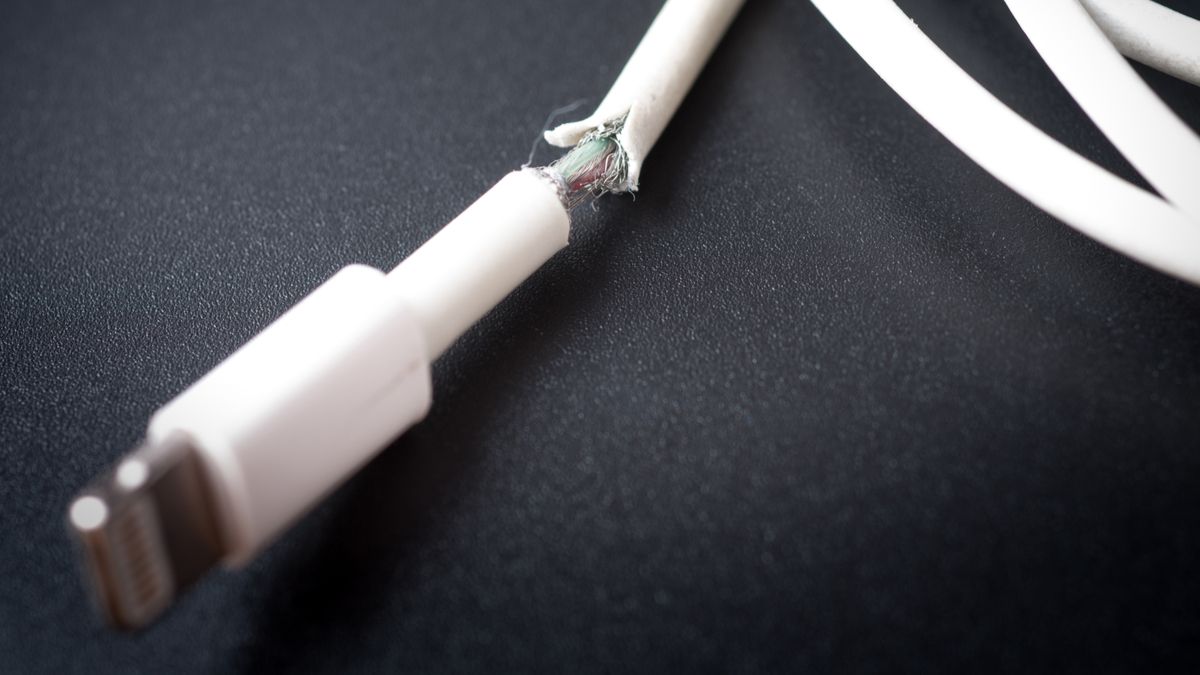Have you been using the same charging cable for years? It's easy to get emotionally attached, but you may not realize that your devices charge much slower than they should. Here are some clear signs that might call for a replacement.
Fraying or Broken Wire
Everyone's dealt with this a couple if not dozens of times in their life. You buy a new charging cable for your electronics, and a few months or even weeks later the wire starts to fray or stops working.
If you see any wire exposed, it means the cable is on its last legs. It's best that you refrain from using the cable as it could cause further damage to your device, or worse, an electrical shock or fire hazard. If you don't see any visible damage to the cable but it still isn't charging, ensure it's plugged in properly or try a different power outlet.
It's usually better to buy a new replacement cable than to attempt to fix it yourself. Charging cables are often pretty cheap, especially when it comes to smaller devices, such as your phone or iPad. This time, consider investing in a higher quality cable from a reputable brand. You should be able to tell they're made of sturdy and reinforced material, such as the Native Union iPhone Charger. The best part is that these types of reinforced cables are designed to withstand constant wear and tear, so you don't have to worry about bending and breaking them.

Native Union Belt Cable - 4ft Lightning
A sensibly-sized cable for charging iPhones and iPads with a stylish and modern look.
All cables eventually deteriorate and die, but that doesn't mean you shouldn't take care of them well. Do your best to avoid putting them through too much damage. Learn to wrap your cables properly, use cable protectors, and keep them out of places where temperatures get high.
Some charging cables may be expensive to replace, especially for bigger devices such as laptops. Rather than throw a broken one out, contact a cable repair shop to see how much they would charge to fix it. Of course, if the repair costs more than a replacement, get the replacement.
Slow Charging Speeds
Charging cables that take forever to recharge your devices are as good as dead. Yes, you'll eventually get your batteries to 100 percent, but only after hours of waiting. Waiting around for hours is incredibly inconvenient and possibly hazardous.
An unusually long charging process could cause unusual heat buildup, which may even damage your device or reduce its battery capacity. You don't want to risk what dangerous things might happen to an overloaded or overheated device that's still charging.
A damaged cable is not worth the risk, but you can still use a slow one. Just be sure to keep an eye on your devices and unplug them as soon as they're at full capacity. If at any point the charger or your device gets very hot, disconnect them immediately and wait a while before charging again. Feel the charging wire while it's plugged into your device. If it starts overheating after a while, it means the charger is overloading and not the battery itself.
If you want a faster recharge, upgrade to a cable that's designed for fast charging. You'll usually see the term "Fast Charger" in the product name, such as the iPhone Fast Charger Cable. You should also look for cables that are durable in addition to their fast speeds.
Bad Connection
It's the worst feeling when you try to plug your charger into one of your devices but it no longer fits. You have to push it in harder or wiggle it around until you find the perfect spot to get it charging. This not only is a nuisance, but it's also a sign that your charging cable is damaged.
The worst-case scenario is that your device's charging port is damaged and not the cable. Let's hope this isn't the case as it'll be far more expensive to fix your device. Grab another charging cable, preferably a newer one, to see if it fits properly. If it does fit, it's likely that the charging cable is damaged. But if it doesn't fit, it's likely that your charging port is damaged.
Lightly blow into the port to clean it out and try again. Alternatively, you can use a toothpick, or an anti-static brush to scoop out any lint or dust. Be careful not to damage the charging port as you're cleaning it by applying too much force. Gently get out anything that may be obstructing the cable from connecting to your device.
If all fails, consider replacing your charging cable rather than trying to fix it. As usual, this will save you the trouble and potential cost of repair itself.

